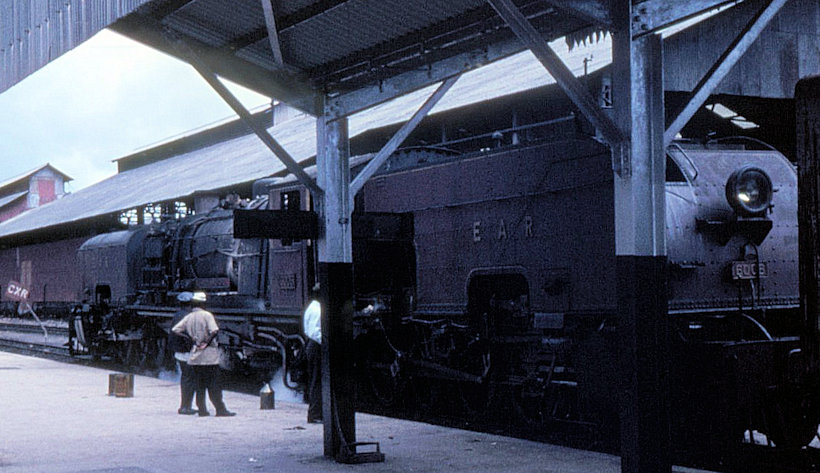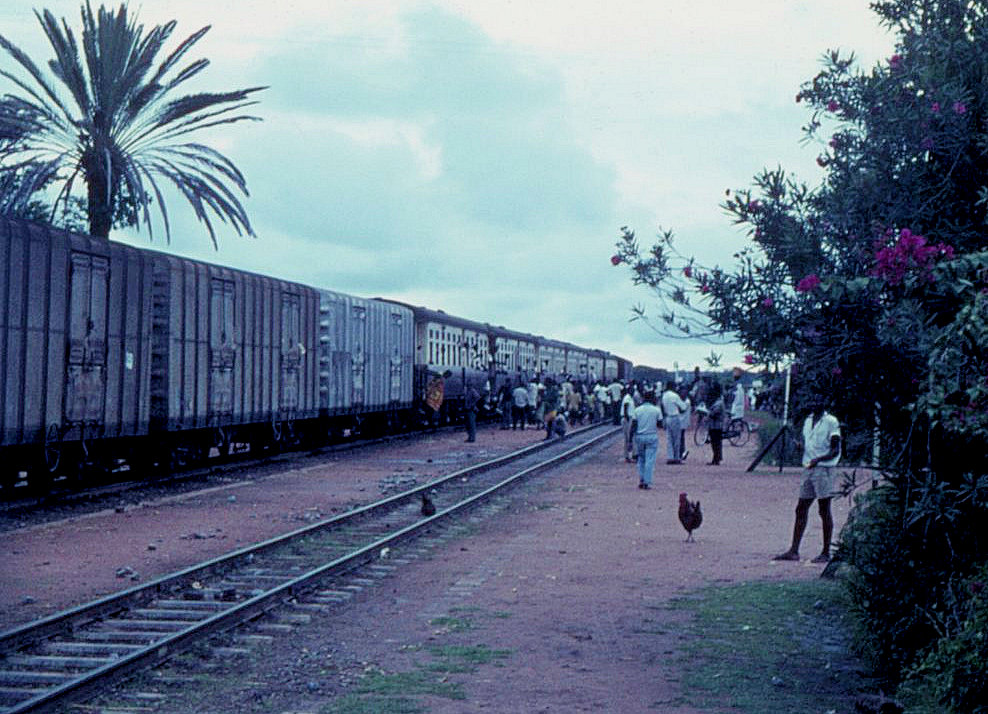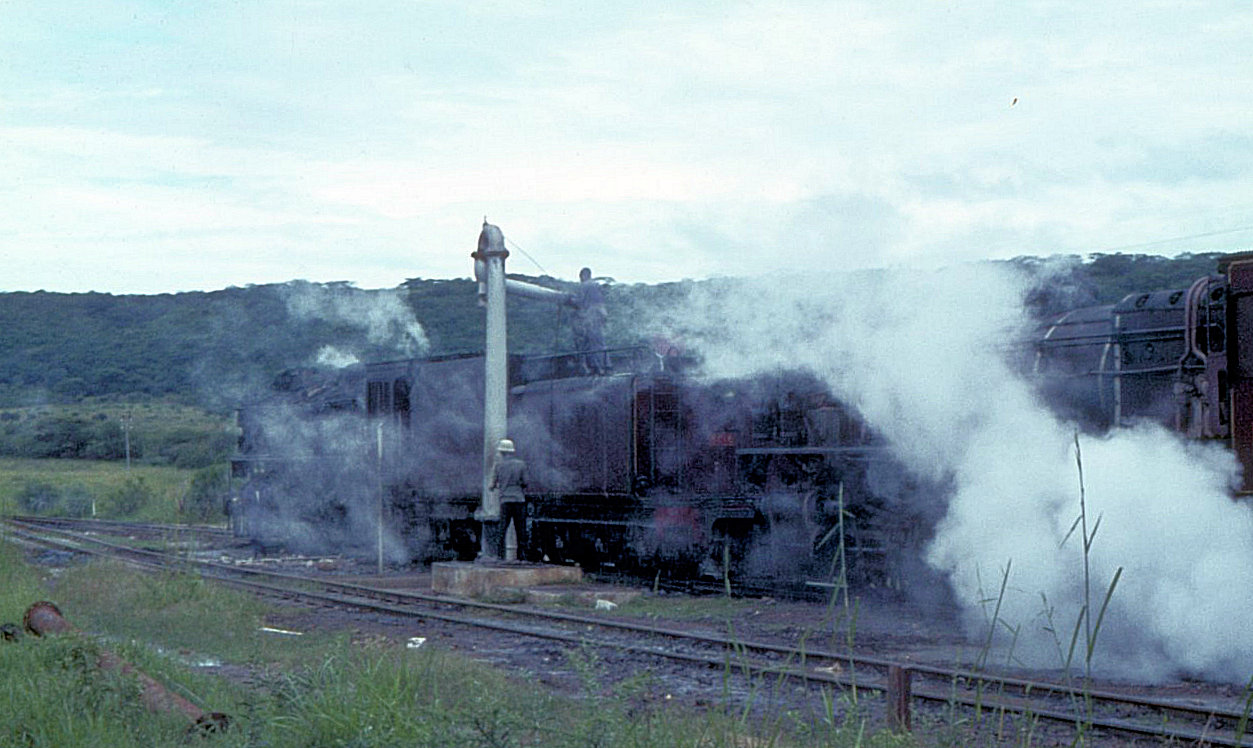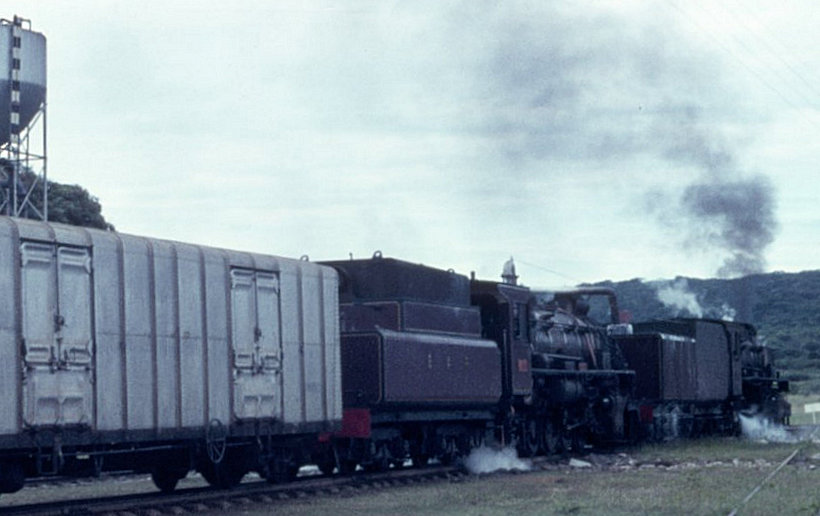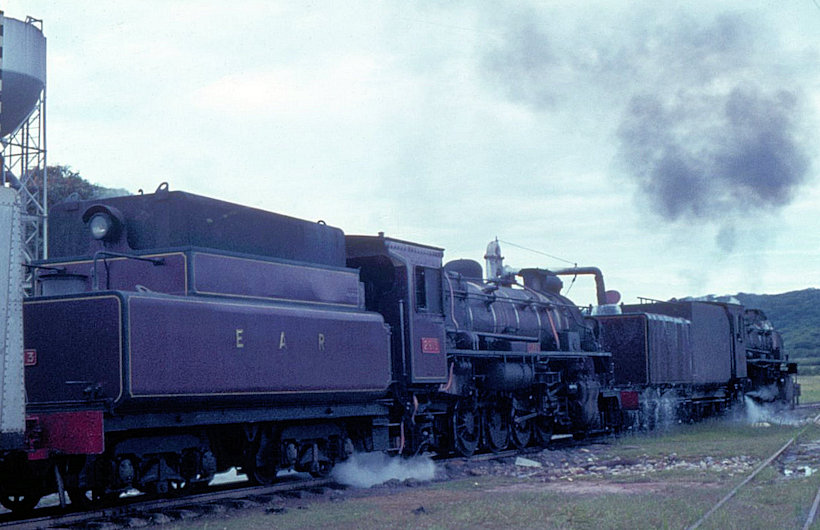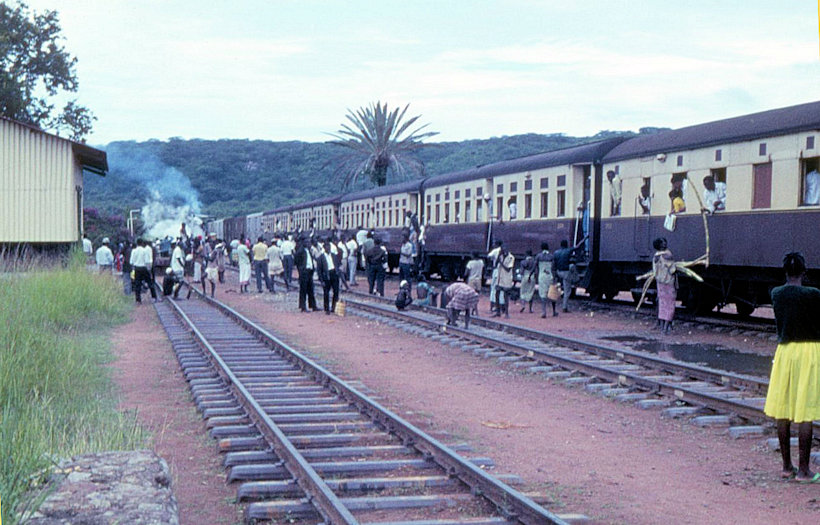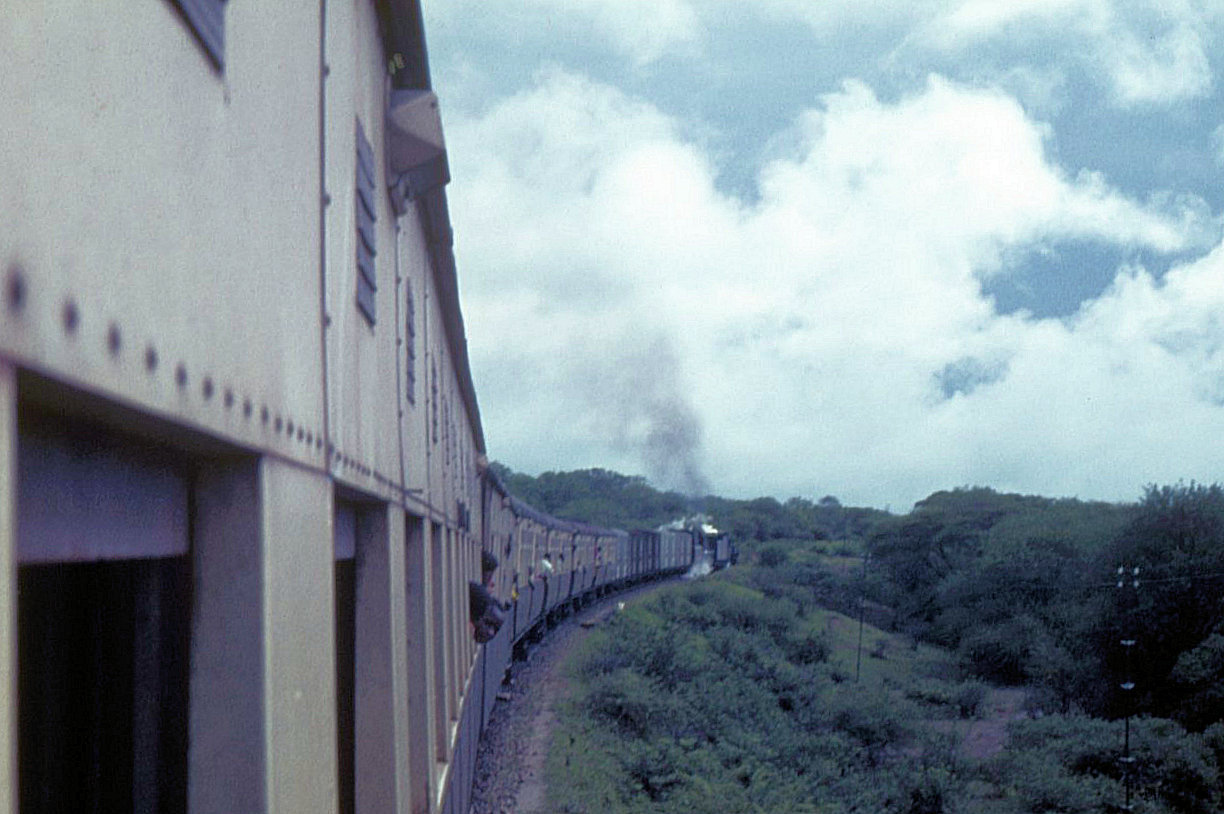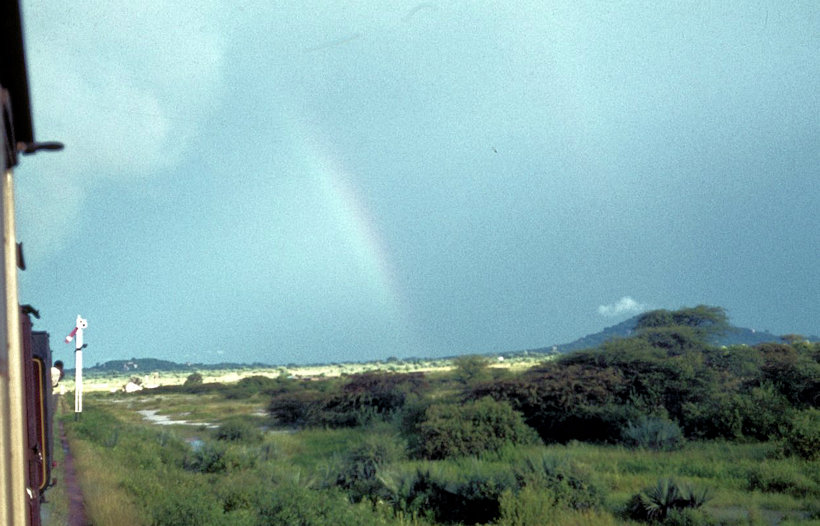|
Tanzania Railways 1966-67 |
|||
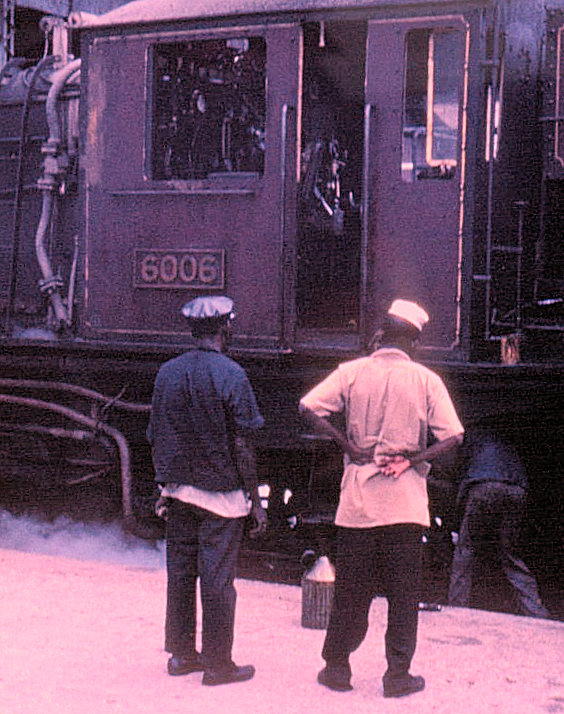 |
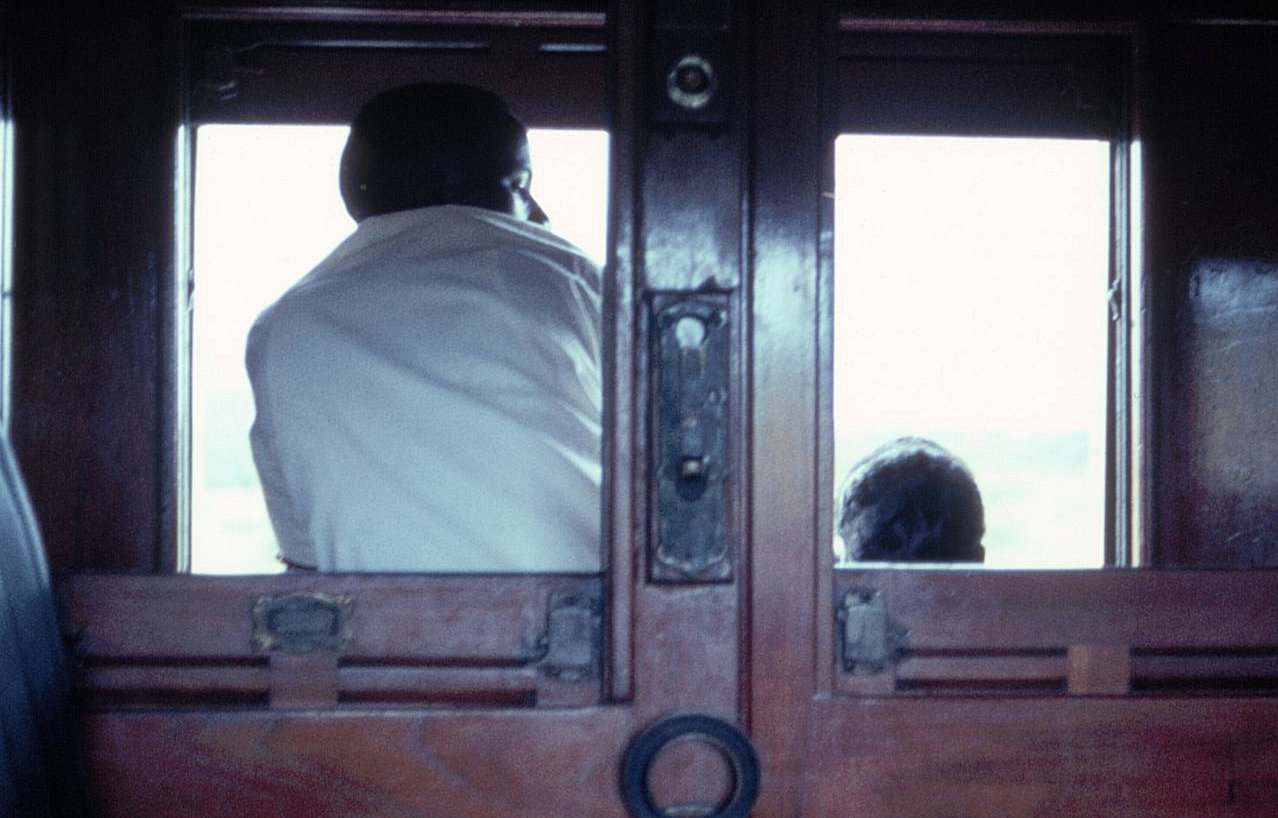 |
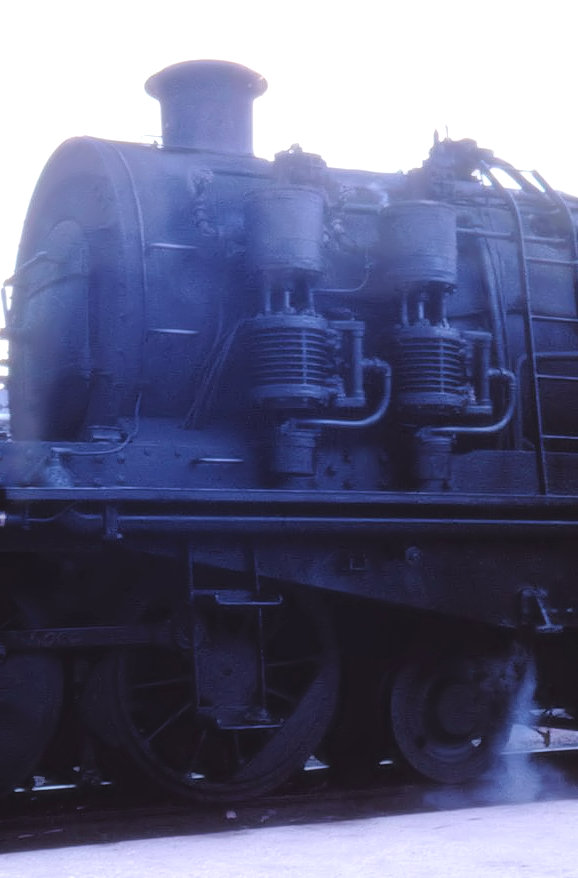 |
|
|
60 (Governor) Class locomotive, formerly named Sir Harold MacMichael, governor of Tanganyika from 1933 to 1937 (left). View from a second class compartment; it is possible that this particular type of coach was unique to Tanzania - the photo was taken about 1967 (centre). Westinghouse airbrake mounted on possibly the same locomotive (right). PHOTOs David Addis |
|||
|
|
|||
|
60 Class (Governor Class) locomotive, formerly named Sir Harold MacMichael prepares for departure possibly from Dar-es-Salaam PHOTO David Addis |
|||
|
|
|||
|
A typical wayside station between Dar-es-Salaam and Morogoro taken sometime between 1966 and 1967 PHOTO David Addis |
|||
|
|
|||
|
Same location where, probably it is the fireman of the lead locomotive who is on top of the massive tender, as he prepares the pilot 31 Class locomotive to take on water. PHOTO David Addis |
|||
|
|
|||
|
The station is between Dar-es-Salaam and Morogoro and the train is double-headed by Tribal Classes 31 (leading as pilot) and 29. The Tribal Class included the 29 Class, 30 Class and 31 Class. All 30 Class locomotives were allocated to Tanzania Railways but 3020 was returned to Kenya in 1988 for preservation in running order. Note the water level gauge on the water tower. PHOTO David Addis |
|||
|
|
|||
|
29 Class locomotive 2913 Kamasia, later Tugen behind the unidentifiable 31 Class. Tanzania Railways had about a dozen 31 Class locomotives which were built between 1955 and 1956 by Vulcan Foundry. PHOTO David Addis |
|||
|
|
|||
|
The first four coaches of the Mixed [Passenger and] Goods train are standard third class coaches which were used throughout Kenya, Uganda and Tanganyika. The coach nearest the camera may have been in a class unique to Tanganyika or could be from a post-Independence batch. PHOTO David Addis |
|||
|
|
|||
|
The same train somewhere between Dar-es-Salaam and Morogoro on the metre gauge Tanganyika Central Line which terminates at Kigoma on Lake Tanganyika. A Chinese built 3ft 6in gauge line connects Dar-es-Salaam to Zambia. PHOTO David Addis |
|||
|
|
|||
|
Interesting lower quadrant signal, unique to EAR&H in Tanganyika, indicating line clear. PHOTO David Addis |
|||
|
Semaphore signals used by EAR&H in Kenya and Uganda were three phase - horizontal for stop; 45 degrees up for proceed with caution and vertically up for line clear - see below PHOTO Trevor Heath |
|
||
